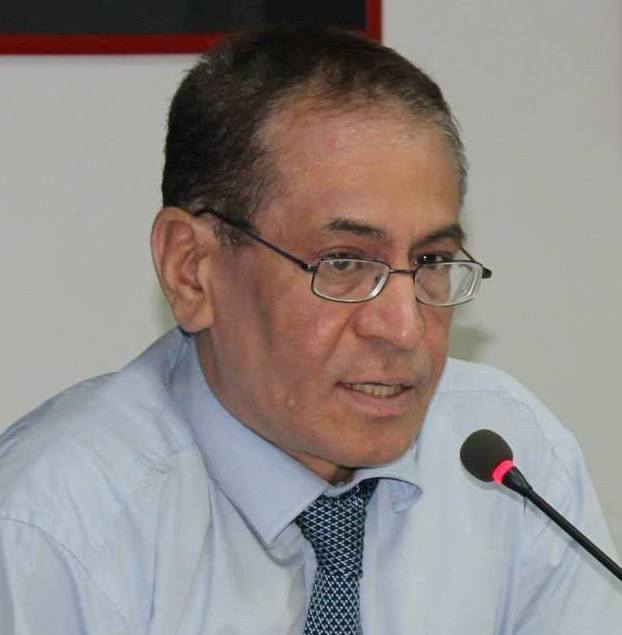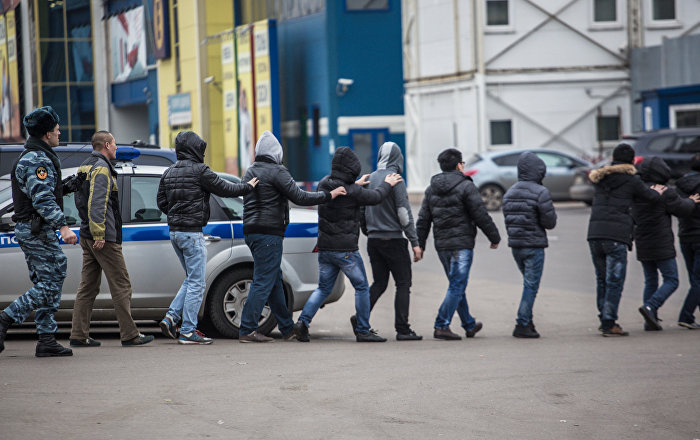“Mass labor migration should not become a permanent phenomenon. The longer it lasts, the more harmful and destructive consequences it accumulates, and those are beginning to threaten political and social stability”, political analyst Parviz Mullojanov told CABAR.asia in an interview.
Follow us on LinkedIn
CABAR.asia: during a meeting with Vladimir Putin, President of the Republic of Tajikistan Emomali Rahmon raised the issue of a mass amnesty for migrants from Tajikistan who violated certain norms of the Russian legislation. Will Moscow satisfy this request? Most likely, only a part of the labor migrants will be amnestied as usual, but the Russian side is unlikely to go towards a full amnesty. The expert community explains this as follows: labor migration has long been not an economic phenomenon, but geopolitical.
For Russia, Tajik labor migrants are an extremely convenient lever of influence on Dushanbe. The budget of Tajikistan directly depends on labor migration; therefore, the Tajik economy is often referred to as the “remittance economy”.
Therefore, the Russian authorities use labor migrants as a tool of geopolitical influence from time to time. Every time, when disagreements arise in the Russian-Tajik negotiations or when the Russian side wants to express its dissatisfaction with any initiatives of the Tajik authorities, a wave of deportations begins.
Same situation occurred in 2011 during the so-called “case of Russian pilots”, and then during the negotiations on the Russian military base, and so on. Strategically, the Russian authorities intend to legalize completely the sphere of labor migration to Russia. However, in fact, migrants are often used as a tool of influence on countries that supply the labor resources to the Russian market: Georgia, Azerbaijan, Moldova, Kyrgyzstan, and Tajikistan as well. On the other hand, the Russian authorities also use deportation as a tool for regulating labor migration in Russia. They also consistently hold a course to reduce illegal migration. This means that there is a certain plan in terms of the volume and number of deportations, which hands down and is further implemented locally. Correspondingly, the relevant official departments often make random decisions on deportation, violating the protocol. A Russian human rights activist counted the number of deportations made by a judge of one of the Moscow courts. According to his calculations, the judge spent less than two minutes in average on each deportation case. According to various sources, over the past 10 years, Tajik migrants transferred home about $22 billion. Do you think that in such conditions there are opportunities in the near future to reduce labor migration and increase the number of jobs inside the country?
Given the large number of migrants (about 1.2 million citizens) in Russia, what measures should the authorities take to protect their interests in the host country? How do you rate the current work of government agencies in this direction?
If we compare current situation with the beginning and mid-2000s, the Tajik government today pays much more attention to protecting our migrants in Russia, our embassy and consulates, representative offices of migration services are more active. However, according to the migrants themselves and their organizations in Russia, the situation is still very far from perfect. Especially, there are many complaints about the bureaucracy in the assistance provision, indifference towards deported migrants, who may be kept in prisons for many months. In addition, there are many complaints about the ineffectiveness of social and legal protection of migrants, the lack of assistance in case of unlawful detentions, violation of rights, extortion, non-payment of salaries, and so on. On the other hand, some experts say that it is profitable for the current authorities to send a potential protest and active group – the youth – to migration and to solve social and economic problems through their remittances… This situation seems to be beneficial only at a first glance. Perhaps, some part of the elite argues for this, but, in the first place, this should be disadvantageous for the political elite. “The remittance economy” is unviable in the long term. It is important to understand that mass labor migration should not become a permanent phenomenon. The longer it lasts, the more harmful and destructive consequences it accumulates, and those are beginning to threaten political and social stability. As international experience shows, labor migration brings the most positive effect in the first five to ten years, usually in a transitional or post-conflict period, during economic and social upheavals, and so on. At this time, it acts as an aid to the economy, performing two main functions: first, it allows a significant part of the population to survive and provide for their families. Secondly, thanks to labor migration, the population gets the opportunity to accumulate initial capital for its subsequent investment in the country’s economy and the development of their own business.
What problems worry migrants above all? First, the majority of migrants are worried about social and economic problems: today, labor migrants spend more and earn less. The cost of a patent, rental housing and food is growing; the devaluation of the ruble and the economic crisis recently have significantly reduced their incomes. Secondly, it is the official status issue: a visa-free regime exists, but bureaucratic difficulties are constantly arising, which again leads to increased expenses for a patent, registration of documents, etc.
Thirdly, it is the legal problems, since migrants are the main object of pressure, lawlessness and extortion by the police, law enforcement and judicial authorities. Regarding the deportation of migrants at the Government of Tajikistan’s expense Of course, the Tajik government, if desired, is able to create a system of free or favorable return of deported citizens back to the country. It is possible to ensure the transportation of the deported migrants by providing a train or a plane for them at least once a week. I do not think that this would require such big money. How can the problem of numerous illegal migrants or those on the “black list” be solved? There are two ways. First, signing the interstate agreement, perhaps within the framework of the Eurasian Economic Union (EAEU) or at the bilateral level. For example, under such an agreement, migrants could receive legal status in Russia, similar to what citizens of the Eurasian Economic Union (EAEU) member countries have. Secondly, in the future, the visa system could introduce labor visas. In this case, illegal migration will cease to exist as a social phenomenon. However, the Tajik side (as well as the Russian side) is unlikely to agree to such a radical step. In general, the legalization of labor migration is already happening. On the one hand, as mentioned above, the Russian government itself intends to end illegal migration in the country in the long term completely. On the other hand, this already happens naturally, as an increasing number of our migrants receive a residence permit or Russian citizenship. This article was prepared as part of the Giving Voice, Driving Change – from the Borderland to the Steppes Project implemented with the financial support of the Foreign Ministry of Norway. The opinions expressed in the article do not reflect the position of the editorial or donor.
